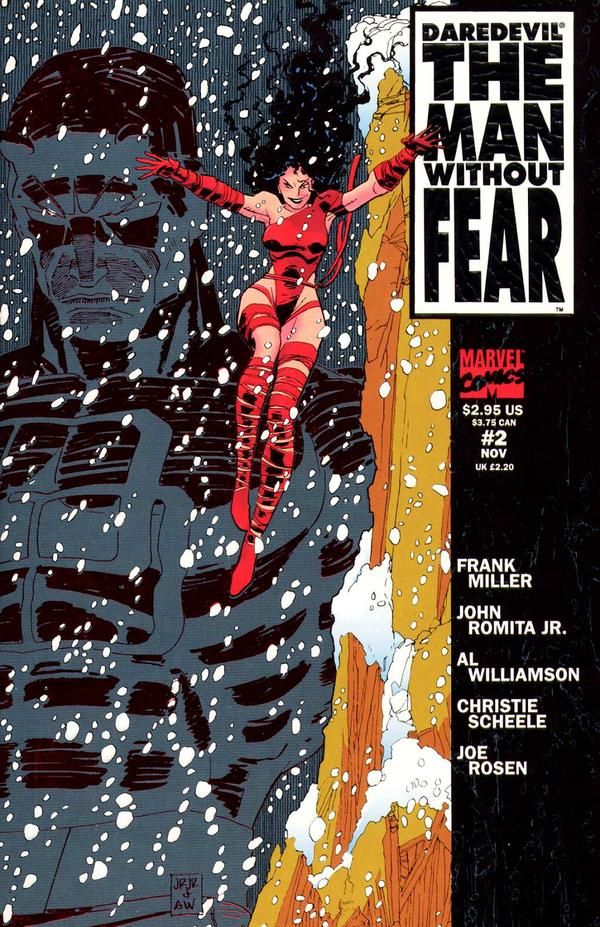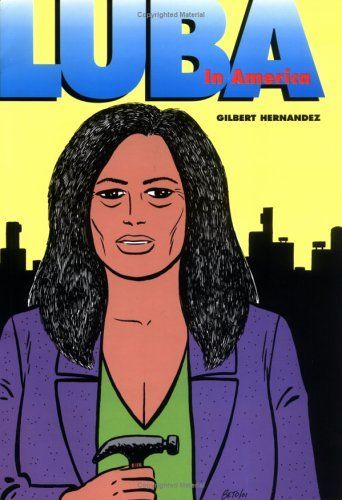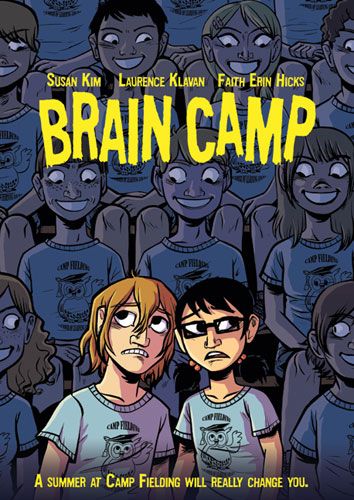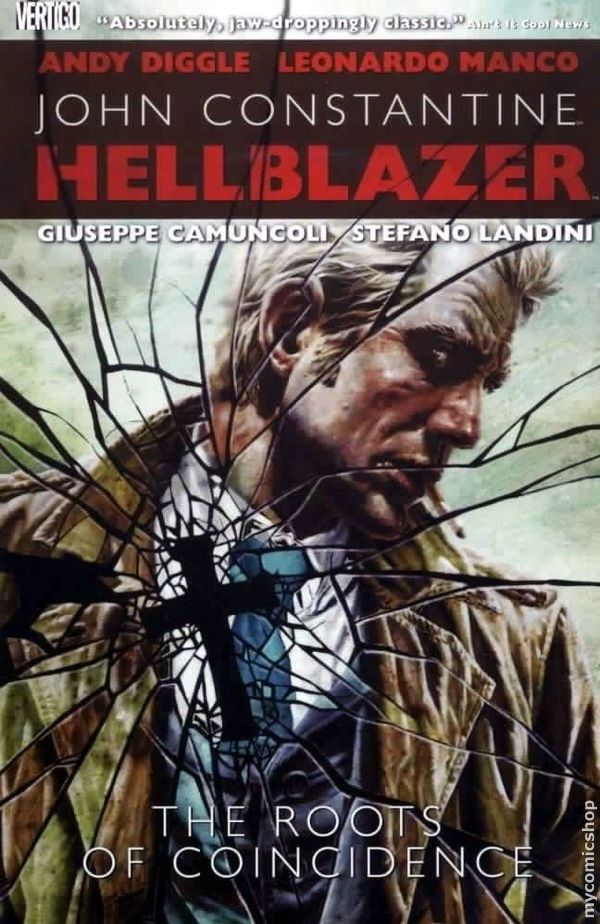Hello and welcome once again to What Are You Reading?, where the Robot 6 crew talk about the comics and graphic novels that they’ve been enjoying lately. Today our special guest is Chad Nevett, who talks about comics in several different places around the web -- at his personal blog GraphiContent, at our sister blog Comics Should Be Good!, as a reviewer for Comic Book Resources and on the Splash Page podcast. He also writes about wrestling for 411mania.
To see what Chad and the Robot 6 crew have been reading, click the link below.
*****
Sean T. Collins
This week, my LOVE AND ROCKTOBER project reached the Luba Trilogy, three volumes collecting the post-Palomar misadventures of hammer-wielding, prodigiously endowed Luba and--more so than Luba herself, really--her sisters Fritz and Petra and her friend Pipo. Luba in America, The Book of Ofelia, Three Daughters are among the densest, sexiest, funniest, and bleakest work in Gilbert Hernandez's oeuvre, which is saying something. Click the links for full reviews!
Michael May
There's a right and a wrong way to read Eric Drooker's Blood Song and I picked the wrong one. In spite of Drooker's making it extremely clear right there in the title, I tried to read it as a straightforward narrative. Consequently, I spent a lot of time thinking, "That's not very realistic" and "That character's behaving very unnaturally" and "That doesn't make any damn sense." It wasn't until I finished it that I thought about the title (and the subtitle: A Silent Ballad - sometimes I'm very dense) and realized that I should have taken it more seriously.
I'm enough of a snob to suggest that you can't have a song without music, but Blood Song is certainly poetry at least, though it has no words either. Told purely in pictures, it's the story of what happens to a young girl from a jungle village when a technologically advanced culture invades her island. Each of Drooker's panels is a beautiful piece of art by itself, mostly in blue and black, but with occasional splashes of stunning, vibrant color. Put together and read, they paint a larger picture and - yes - tell a story, but not one that's meant to be interpreted literally. It's one that's best experienced as a series of feelings: calm, appreciation, fear, shock, anger, despair, and ultimately...hope.
Chris Mautner
I didn't read these this week, but I did read them recently:
Brain Camp by Susan Kim, Laurence Klavan and Faith Erin Hicks -- This follows the same basic plot outline as Susan Kim's other recent book for First Second, City of Spies: Two young tweens, a boy and a girl, uncover a big, horrible adult conspiracy and nobody believes them about what's going on so they have to foil the plan themselves (while saving time to share a first kiss). The big difference here is the setting is a modern-day summer camp, whereas Spies was involved WWII Nazis running around in New York City. I enjoyed Camp a good deal more than Spies, and a lot of that may be due to Hicks' engaging art. Parents should be warned, though, about the ick factor, as there's quite a lot of scenes of young campers vomiting up large, dead baby birds. Like, a lot.
Amulet Book Three: The Cloud Searchers by Kazu Kibuishi -- Kibuishi makes his Miyazaki influence even more blatant in this third volume -- several sequences seem completely lifted from Castle in the Sky. But then originality was never this series' strong suit. The ability to function within some very well-trod idioms and genres, and still tell an engaging story, is. It all feels familiar, but it's never boring.
Stone Rabbit: Ninja Slice by Erik Craddock -- This is the second of these all-ages books I've read, and they really crack me up in the way that some of the better Cartoon Network shows circa 1998 did. This one's about a pizza shop run by ninjas, hence the title. If you're looking for something to read with the kids, it's good for a laugh.
I am Here by Ema Toyama -- Toyama clearly wants to say something about bullying and peer pressure and self-confidence in this shojo manga about a uber-shy girl who learns to come out of her shell thanks to a cute boy and some friends on her blog. But the main character is soooooo mousy, and the mean girls are sooooo mean, and the advice is sooooo treacly that it's honestly hard to work up any enthusiasm.
Chad Nevett
This week, my Wednesday reading was dominated by the two Grant Morrison Batman titles. They were definitely the books I looked forward to the most and they both delivered a lot of entertainment. The energetic feel of The Return gave the impression of a 'new chapter' beginning, while Batman, Inc. took the offbeat fun feeling of the early Batman and Robin issues even further. Throw in some twisted, deranged laughs with Deadpool MAX #2 and a solid opening to its new arc in Avengers #7 and it was a good week for Marvel and DC. I gave Osborn #1 a shot, but it didn't blow me away. I liked how so much of the issue centers around Osborn without him on panel much, but thought the ending was a little too coincidental/hokey and that Norah character was so obnoxious that I cringed any time she was on panel. Any reader of The Boys who's been skipping the Highland Laddie mini-series missed out on Annie's origin/history this week. But, I definitely would have preferred Darick Robertson drawing this one. An origin in this world not drawn by him just feels wrong.
Besides the usual weekly comics, I got a couple of trades this week. My shop has a bunch of Marvel trades for 50% off, so I finally picked up Daredevil: The Man Without Fear by Frank Miller and John Romita, Jr. I always love seeing how artists riff on Miller's style whenever they draw his scripts. Jim Lee does it a bit in All-Star Batman and Robin, the Boy Wonder and Romita definitely had a Miller look to his pencils. Elektra in particular was clearly Romita trying to emulate Miller. That panel where she's driving the car and using the steering wheel as a pillow is fantastic. Miller's writing is a little over-the-top with the prose, but that's to be expected. He really sets firm the pattern that women around Matt Murdoch will die/get injured/come to harm in some way by making that a core part of the character: any time he enjoys himself or gets emotionally attached to a woman, she's taken away (usually violently). One of those ideas that sounds good on paper until it becomes the guide to writing the character and his relationships. I was surprised that we never see the 'radar vision' of Matt -- most of the time, he acts like he can see just fine and that's an interesting approach. It effectively demonstrates how his powers work without throwing our face in it. There are a lot of little parts to The Man Without Fear that jumped out at me.
I also picked up The Roots of Coincidence, the third (and final) trade of Andy Diggle's Hellblazer run. I've had the first two trades for a long time and never had the chance to get the third one. I took getting the third one as a chance to reread the first time and experience the run as a whole. I admire some of the ideas Diggle uses, like John being guided by synchronicity, and the two-issue opening story, drawn by Giuseppe Camuncoli, is pretty great. But, the run never follows through on the threats introduced. Every obstacle John faces crumbles too easily, which is unsatisfying. The final issue and the use of his unborn twin brother is meant to be another 'big revelation that changes everything in John's world' moment, but just damages the character and the work others did before. John got cancer because of his twin? He fell into holes of despair and self-pity because of his twin? I don't know how they let that actually get put out there. It minimalizes some of the best Hellblazer moments; it doesn't enhance, it tarnishes. Okay, John Constantine fanboy tangent over...
Outside of comics, I just finished a run of Hunter Thompson books for pleasure (and for a project I'm working on) and have moved onto rereading some Raymond Chandler, beginning with The Lady in the Lake. I remember this one being one of the weakest of Chandler's books, but I reread his first three books somewhat recently, so decided to begin there. I'm only a couple of chapters in, just enough for Marlowe to have gotten his case. Today, while eating lunch at work, I read an essay on a trio of Saul Bellow novels in the latest issue of Harper's and enjoyed that quite a bit. I've never read anything by Bellow, but the essay was engaging and really sold me on the craft and thoughtfulness in Bellow's writing. I may have to give his work a look. Hopefully, tomorrow, I'll be able to read the Don DeLillo short story in the magazine.






